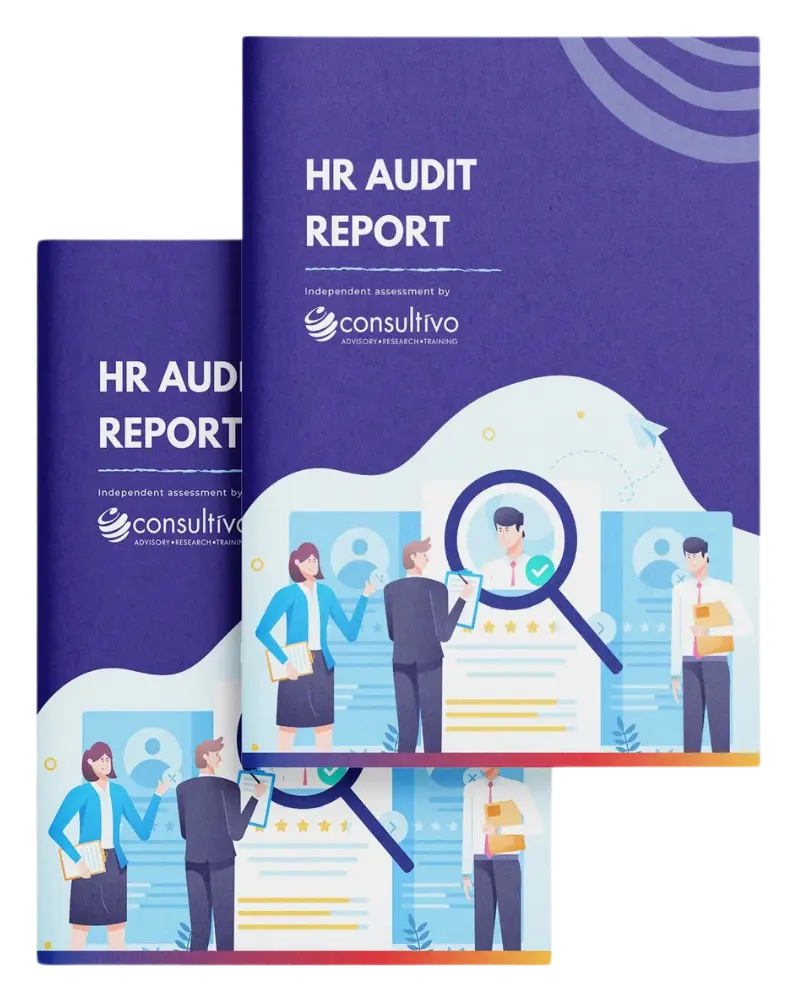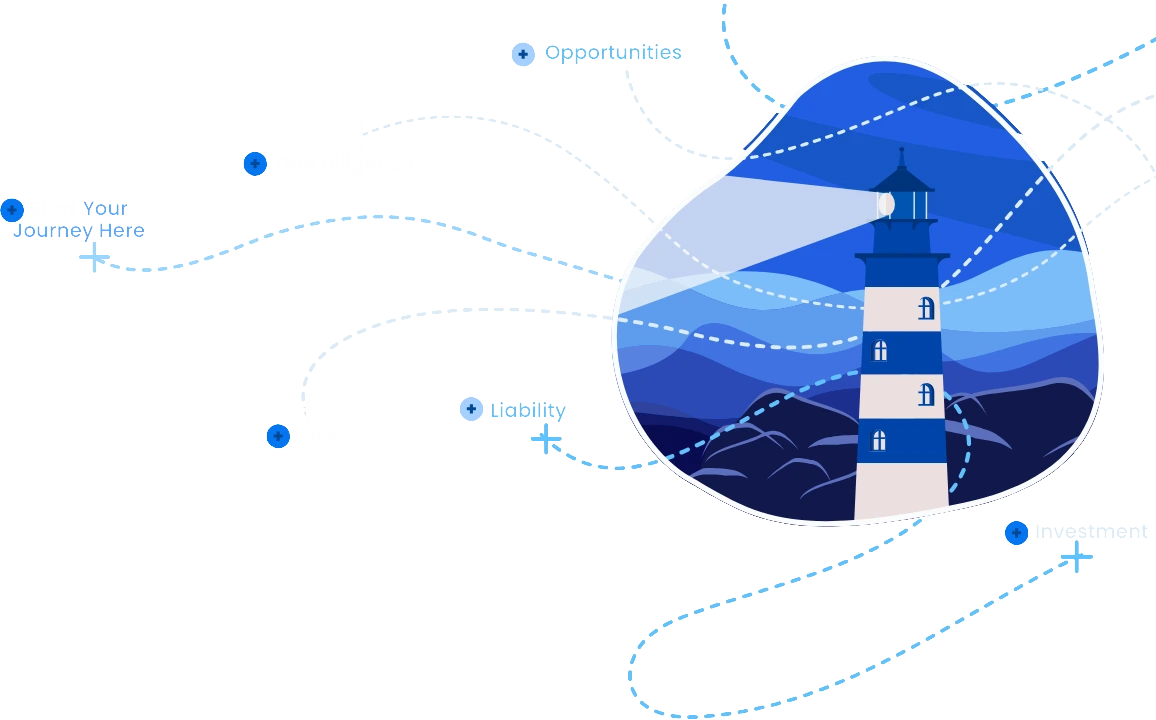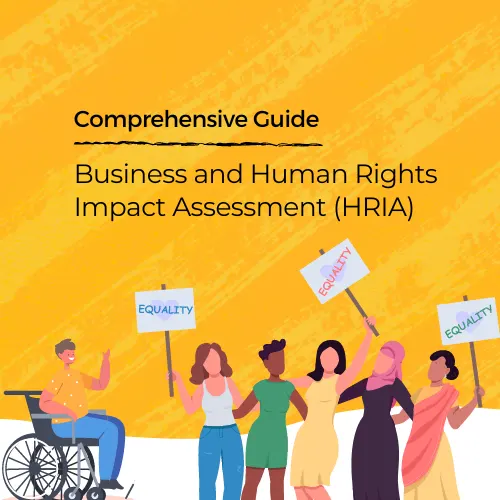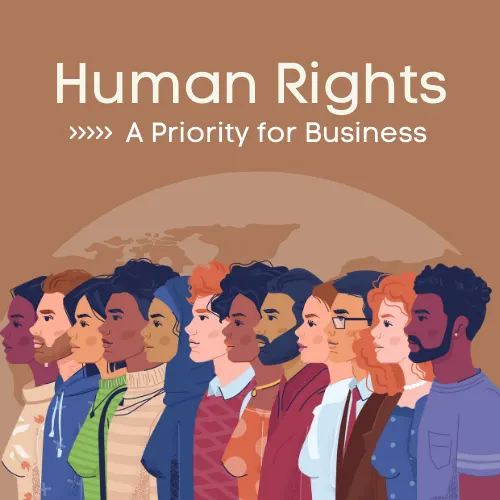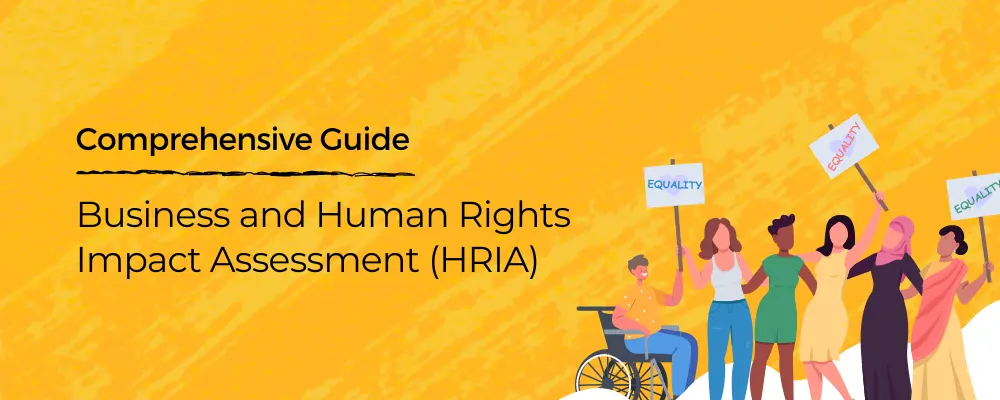
HRIA – Business and Human Rights Impact Assessment | In a world that is becoming increasingly interconnected, businesses are not only responsible for economic prosperity but are also key players in shaping societal and environmental landscapes.
The concept of Business and Human Rights Impact Assessment (HRIA) has emerged as a vital tool to gauge the effects of business activities on both human rights and the environment. This comprehensive guide aims to delve into the intricacies of HRIA, exploring its importance, methodologies, challenges, and the transformative potential it holds.
What you will find here
I. Understanding Business and Human Rights Impact Assessment (HRIA)
A. Definition and Scope
Defining HRIA: Human Rights Impact Assessment (HRIA) is a comprehensive process that evaluates the potential and actual impacts of business operations on human rights. It aims to identify both positive and negative consequences, guiding businesses in making informed decisions that respect human rights.
Scope of HRIA: Moving beyond the traditional confines of Corporate Social Responsibility (CSR), HRIA offers a more focused approach. It scrutinizes the intricate ways through which business activities can affect human rights, urging companies to take accountability and act proactively.
B. The Evolution of HRIA
Historical Perspective: The concept of HRIA has evolved from a nascent idea to a critical business tool over the years. Initially rooted in the need to address egregious labor rights violations, its scope has expanded to encompass a wide range of human rights issues.
Global Recognition and Adoption: Today, HRIA is recognized globally as a vital component of ethical business practices. Its adoption is encouraged by international frameworks and guidelines, signaling a shift towards universal human rights standards in business operations.
II. Importance of HRIA in Modern Business Practices
A. Human Rights and Social Responsibility
Navigating Human Rights Issues: HRIA empowers businesses to navigate the complex terrain of human rights issues. It provides a structured approach to identify, understand, and address the impacts of their operations on people’s lives.
Bridging the Gap with Social Responsibility: By integrating human rights considerations into their core strategies, businesses can bridge the gap between profit-making and social responsibility, fostering trust and sustainability in their operations.
B. Environmental Sustainability
Assessing Ecological Footprints: HRIA includes assessing the ecological footprints of business activities. It encourages companies to consider the environmental implications of their operations, promoting a more sustainable approach to business.
Aligning Business Practices with Environmental Goals: Through HRIA, businesses can align their practices with environmental sustainability goals. This alignment not only mitigates negative impacts but also enhances corporate reputation and long-term viability.
III. Key Components of HRIA
A. Stakeholder Engagement
Identifying Stakeholders: A critical step in HRIA is identifying all stakeholders affected by business activities. This includes employees, communities, customers, and even the environment.
Importance of Inclusive Engagement: Engaging with stakeholders in an inclusive manner is essential. It ensures that diverse perspectives are considered, strengthening the assessment’s accuracy and effectiveness.
B. Impact Identification and Assessment
Analyzing Direct and Indirect Impacts: HRIA involves a thorough analysis of both direct and indirect impacts of business operations. This holistic view enables businesses to fully understand their influence on human rights.
Predictive Modeling for Future Impacts: Employing predictive modeling helps businesses anticipate future impacts. This foresight is crucial for developing strategies that prevent human rights violations before they occur.
C. Risk Mitigation and Management
Developing Strategies for Risk Reduction: Identifying risks is only the first step; HRIA also involves developing and implementing strategies to mitigate these risks effectively.
Best Practices in Risk Management: Adopting best practices in risk management ensures that businesses can handle potential human rights challenges proactively and ethically.
IV. Methodologies in HRIA
A. Qualitative Approaches
- Interviews and Surveys: Qualitative methods like interviews and surveys provide in-depth insights into the human rights concerns of stakeholders, offering a nuanced understanding of impacts.
- Focus Groups and Workshops: These platforms facilitate dialogue and interaction, enabling businesses to gather diverse perspectives and foster a sense of community involvement.
B. Quantitative Approaches
Data Analytics and Metrics: Quantitative methods involve the use of data analytics and metrics to measure and track the impacts of business activities on human rights, providing a clear, objective basis for assessment.
Cost-Benefit Analysis: This approach helps in weighing the costs of implementing human rights initiatives against the benefits, ensuring that actions taken are both effective and economically viable.
C. Integrating Technology in HRIA
GIS Mapping: Geographic Information Systems (GIS) mapping is a powerful tool that visually represents the geographical distribution of impacts, aiding in the identification of areas requiring attention.
Artificial Intelligence for Impact Prediction: AI technologies offer predictive capabilities that can forecast potential human rights impacts, enabling preemptive action and strategic planning.
V. Challenges in Implementing HRIA
A. Limited Awareness and Understanding
Breaking Down Complexities for Stakeholders: One of the challenges is making the complex concept of HRIA understandable for all stakeholders, necessitating clear communication and education.
Educational Initiatives for Businesses: Implementing educational initiatives can equip businesses with the knowledge and skills needed to conduct effective HRIAs, fostering a culture of respect for human rights.
B. Data Collection and Analysis
Overcoming Data Challenges: Collecting reliable and relevant data is a significant challenge. Businesses must navigate these obstacles to ensure their HRIA is grounded in accurate information.
The Role of Technology in Data Management: Leveraging technology can streamline data collection and analysis, making the HRIA process more efficient and effective.
C. Balancing Economic Interests and Social Responsibility
Achieving a Harmonious Coexistence: Balancing economic interests with social responsibility is a complex challenge. Businesses must strive to find a harmony that allows for profitability while respecting human rights.
Case Studies of Successful Integration: Examining case studies where businesses have successfully integrated economic and social goals can provide valuable insights and models for others to follow.
VI. Real-World Applications and Success Stories
A. Industry-Specific HRIA Implementation
Extractive Industries: In extractive industries, HRIA has been instrumental in addressing issues related to land rights, environmental degradation, and community impacts, showcasing the potential for responsible resource extraction.
Manufacturing and Supply Chains: The manufacturing sector, particularly in global supply chains, has seen the successful implementation of HRIA to improve labor practices, reduce exploitation, and ensure ethical sourcing.
B. Global Initiatives and Standards
United Nations Guiding Principles on Business and Human Rights: These principles have set the global standard for preventing and addressing the risk of adverse impacts on human rights linked to business activity.
ISO 26000: Guidance on Social Responsibility: This international standard provides guidelines for social responsibility, including human rights, underscoring the importance of HRIA in achieving ethical business practices.
VII. Future Trends in HRIA
A. The Growing Role of ESG (Environmental, Social, and Governance)
ESG as a Holistic Approach: The integration of Environmental, Social, and Governance (ESG) factors represents a holistic approach to business that includes HRIA as a key component, reflecting the interconnectedness of these issues.
Integrating ESG into HRIA Practices: By incorporating ESG considerations into HRIA, businesses can ensure a more comprehensive assessment of their impact on society and the environment, driving sustainable development.
B. Advancements in Technology
Big Data and Predictive Analytics: The use of big data and predictive analytics in HRIA can enhance the accuracy of impact assessments, offering insights into potential future challenges and opportunities.
Blockchain for Transparent Supply Chains: Blockchain technology can provide transparency in supply chains, ensuring that human rights are respected throughout the entire process, from production to distribution.
VIII. Conclusion
A. Recapitulation of Key Points
HRIA’s Crucial Role in Shaping Responsible Businesses: HRIA has emerged as a fundamental tool for businesses aiming to operate responsibly and ethically, underscoring its importance in today’s corporate world.
Continuous Improvement and Adaptation: The field of HRIA is continually evolving, with new methodologies, technologies, and approaches being developed to better assess and address human rights impacts.
B. Call to Action
Encouraging Widespread Adoption of HRIA: It is crucial for businesses across sectors to adopt HRIA practices, recognizing their responsibility towards society and the environment.
Fostering a Culture of Responsibility in Business: By fostering a culture that prioritizes human rights, businesses can contribute to a more equitable and sustainable world, setting a standard for ethical operations.
This comprehensive overview of Business and Human Rights Impact Assessment (HRIA) illustrates its critical role in guiding businesses towards responsible and sustainable practices. By embracing HRIA, companies can not only navigate the complexities of modern business environments but also contribute positively to society and the planet.
Frequently Asked Questions (FAQ) on Business and Human Impact Assessment (HRIA)
What is Business and Human Rights Impact Assessment (HRIA)?
A1: HRIA is a systematic process that evaluates the potential and actual impacts of business activities on human rights and the environment. It aims to ensure responsible business practices that consider social, ethical, and environmental considerations.
Why is HRIA important for businesses?
HRIA helps businesses understand and mitigate their impacts on human rights and the environment. It fosters socially responsible practices, enhances corporate reputation, and aligns businesses with global sustainability goals.
What are the key components of HRIA?
HRIA involves stakeholder engagement, impact identification and assessment, and risk mitigation and management. These components ensure a comprehensive evaluation of a business’s influence on human rights and the environment.
How does HRIA address environmental sustainability?
HRIA assesses a business’s ecological footprint, identifying areas for improvement and aligning operations with environmental goals. It helps in minimizing negative environmental impacts and promoting sustainability.
What methodologies are used in HRIA?
HRIA employs both qualitative (interviews, surveys, focus groups) and quantitative (data analytics, cost-benefit analysis) approaches. Integrating technology, such as GIS mapping and artificial intelligence, enhances the assessment process.
What challenges are associated with implementing HRIA?
Challenges include limited awareness, data collection complexities, and balancing economic interests with social responsibility. Education, technological advancements, and successful case studies can help overcome these challenges.
How can businesses engage stakeholders in the HRIA process?
Businesses can identify stakeholders, involve them in decision-making, and maintain transparent communication. Inclusive engagement ensures diverse perspectives and a more accurate assessment of impacts.
Are there global initiatives and standards related to HRIA?
Yes, initiatives like the United Nations Guiding Principles on Business and Human Rights and standards like ISO 26000 provide frameworks for businesses to integrate HRIA into their practices on a global scale.
Can you provide examples of successful HRIA implementation in specific industries?
Industries such as extractive industries and manufacturing/supply chains have successfully implemented HRIA. Case studies showcase how businesses in these sectors have improved practices and addressed human rights and environmental concerns.
How can businesses stay updated on future trends in HRIA?
Staying informed on future trends involves monitoring the growing role of ESG (Environmental, Social, and Governance) factors and advancements in technology, such as big data analytics and blockchain applications, which are increasingly integrated into HRIA practices.
How can businesses adopt HRIA and foster a culture of responsibility?
Businesses can start by raising awareness internally, investing in education and training, and incorporating HRIA into corporate governance. Fostering a culture of responsibility requires commitment from top management and active participation at all levels of the organization.
What is the ultimate goal of HRIA?
The ultimate goal of HRIA is to ensure that businesses operate in a manner that respects human rights, preserves the environment, and contributes positively to society. It strives for a balance between economic success and social and environmental well-being.

Let's discuss
Navigating the way to
ESG & Sustainability Due Diligence
Your Risk Mitigation Tool
Supporting Investment – Merger – Acquisition
In conclusion, as businesses navigate the complex terrain of global markets, Business and Human Rights Impact Assessment (HRIA) emerges as a beacon, guiding them towards responsible and sustainable practices. This guide aims to equip businesses, policymakers, and stakeholders with the knowledge and insights needed to embrace HRIA and pave the way for a future where economic success goes hand in hand with social and environmental well-being.
Share this post
Category: Blog
Tags: People Advisory
About the author
Director – Sustainable solutions at Consultivo
Madhabi Guha specialises in the domains of ESG, Social Compliance, Business and Human Rights, Development Projects and focuses on supporting go-to-market teams along with customer and partner relationships. Madhabi has been working in the sustainability & business excellence advisory business for over 14 years.
Madhabi has been developing individuals, teams, and organisations in the areas of leadership, excellence and Human Factors in the field of sustainability, people and community.
Related insights
Blogs
Blogs
Blogs
Blogs
Blogs
Blogs
Blogs
Blogs
News & Events
News & Events
View more in Impact Stories | Blogs | Knowledge Bank | News and Events

